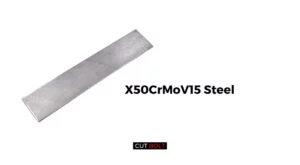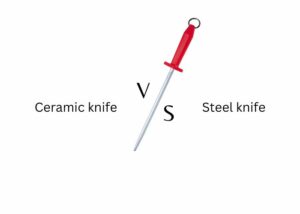What’s the best steel for a knife? It’s a question we’re often asked. But the answer is always the same: it depends on the context of use.
In other words, there’s no such thing as the best steel, but rather one that’s adapted to a specific use. Indeed, it seems logical that a steel used in the kitchen would not be as effective for outdoor use.
Key Takeaways: In this blog post, you can expect a deep dive into the world of knife steel. We'll unravel the mysteries behind choosing the best steel for your knife, offering insights into the factors that matter most. By the end, you'll be equipped with the knowledge needed to make an informed decision, ensuring your knife is not just a tool but a trusted companion tailored to your cutting needs.
Find the best knife handle materials if you are interested.
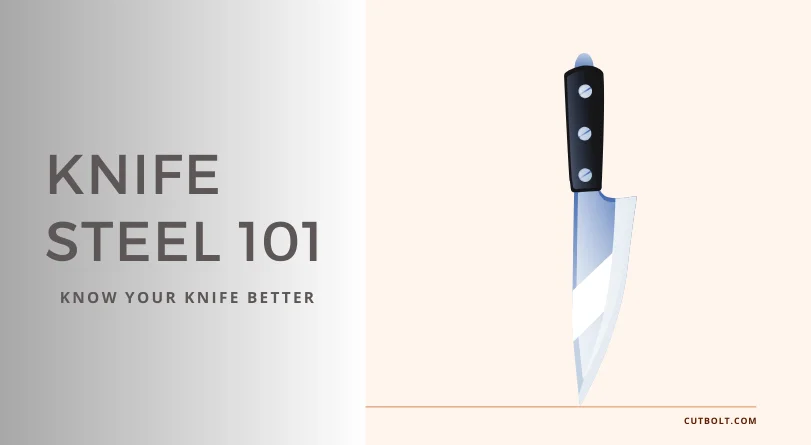
Important things to know before choosing steel for a knife blade
For the uninitiated, all this is somewhat complex, and it’s precisely to find out more that you’re reading this page. Below you’ll find a list of the main components you need to pay attention to, to make sure you choose the right steel for the way you use your knife:
- The cutting edge, is more commonly known as HRC (Rockwell) hardness. A steel can have a hardness of 67HRC, which is very hard, while a “soft” steel will have a hardness of 55HRC.
- Resilience or toughness. This refers to the steel’s resistance to breakage. The harder the steel, the more brittle it is. However, the shape of the blade and its thickness must also be taken into consideration, as the thicker the cutting edge, the less brittle the steel.
- Rust resistance is the ability of steel to resist oxidation or rust. Some steels require more maintenance than others, so it’s best to be in the know to avoid unpleasant surprises.
- Heat treatment is a factor that affects the above-mentioned components, particularly hardness.
- Sharpening, all steels are equal when it comes to sharpening. Once again, you need to know this to avoid mistakes.
Choosing the right steel is a question of compromise because no steel will be super-sharp, super-resilient and super-stainless all at the same time.
Some will be sharp but brittle, and vice versa, which is why you need to identify your needs carefully.
Of course, some steels are better than others, and there are steels at every price point. Knowing your budget is also essential, as quality steel can be quite expensive, but fortunately, there are good compromises to be made.
Understanding the role of chemical elements in steel
Steel is composed mainly of iron and carbon. However, other chemical elements can be added to modify steel’s properties.
Rest assured, you don’t need to be a seasoned chemist to read the rest of this paragraph. Below are the main chemical elements likely to be encountered.
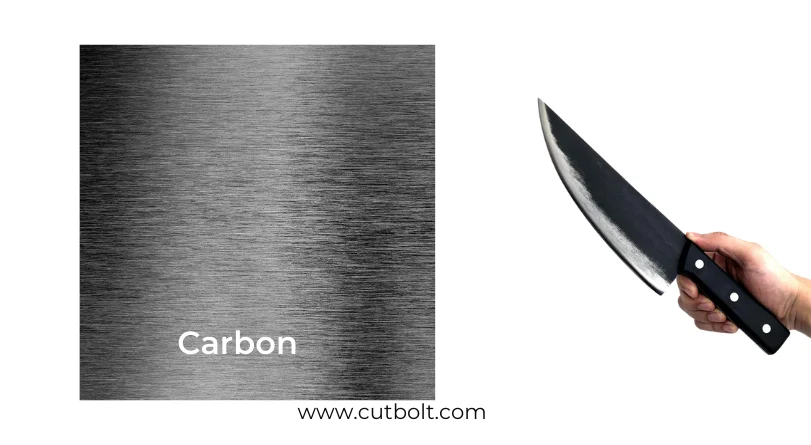
1. Carbon
With atomic number 6 and symbol C, carbon is a decisive element in the choice of steel for a folding or kitchen knife. Indeed, carbon content is closely linked to edge quality.
As you can see, the higher the carbon percentage, the higher the cutting quality. But what exactly is a high carbon content? The answer is from 0.6% upwards.
Kitchen knife blades often have a high carbon content, so they are very sharp and durable over time (much less sharpening). Be careful, however, as they are not dishwasher-safe and must be dried immediately after washing.
Related: Carbon vs. Stainless Steel Knife

2. Chromium
Atomic number 24 and symbol Cr. Chromium plays an important role in stainless steel, or corrosion resistance if you prefer.
A steel is considered stainless when its chromium content exceeds 13%. The trick to easily identifying chromium content is to look at the number following the Cr symbol. In the case of 8Cr13MoV steel, for example, the number following the Cr symbol is 13, so the chromium content is 13%.
3. Molybdenum and vanadium
No. 42 and 23 respectively, symbol Mo and V. Molybdenum has a major impact on hardness, while vanadium adds strength and, above all, elasticity. This is what makes steel less brittle in use.
Molybdenum is frequently associated with vanadium, and when we look at their advantages, we quickly understand why they are so complementary.
Note that they are generally found in very small quantities, which is far from being a hindrance to their effectiveness.
4. Tungsten
Atomic number 74, symbol W. Tungsten means “heavy stone“, so it’s easy to understand why it increases hardness and impact resistance. In fact, this chemical element is used by many manual sharpeners. Tungsten has a high abrasive power, which is why it is so widely used in knife sharpening systems.

5. Cobalt
No. 27 in the periodic table of elements, cobalt (symbol Co) has similar properties to the tungsten we’ve just been talking about. It also improves hardness and impact resistance, while acting as a good “binder” for the different elements in steel. Cobalt is therefore of interest not only to the end-user of the knife, but also to the cutler or blacksmith during the manufacturing process.
6. Manganese
Atomic number 25, symbol Mn, manganese is highly versatile, increasing resistance to wear and impact, as well as elasticity and hardness. You must therefore be careful not to add too much manganese, as it cannot be repeated often enough: too much hardness makes steel more brittle. Manganese is also prized for its deoxidizing properties, as oxygen is harmful during steelmaking.
7. Silicon
Atomic number 14, symbol Si, silicon is an element that provides overall strength (tensile strength, wear resistance and cold hardness). It therefore has a special place in cutlery.
8. Nickel
Its atomic number is 28, and its symbol is Ni, so we’re really talking about nickel. In terms of properties, it is similar to manganese and helps the blacksmith to forge steel. As you can see, nickel is an invaluable aid in the manufacture of steel, and therefore of knife blades.
Please note that other alloys can also be found in steel, such as nitrogen, copper, titanium, etc. The above list is certainly relatively complete, but not exhaustive.
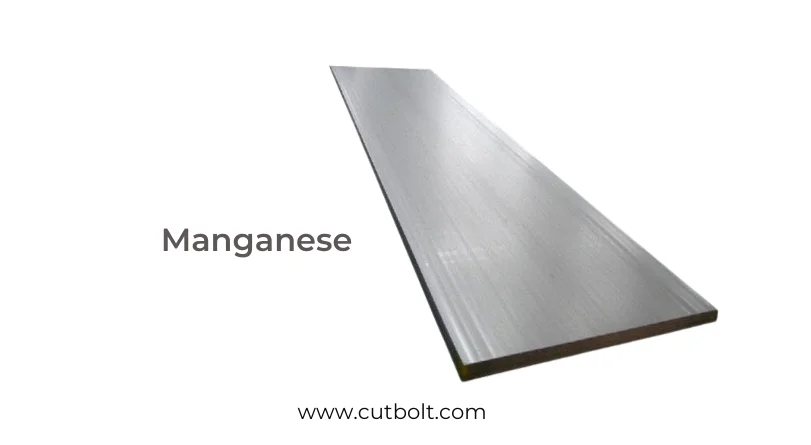
The main steels for your knife blades
Now that you know the different chemical elements in steel, you should be able to see things a little more clearly.
One steel differs from another in the quantity of chemical elements it possesses – it’s a question of proportions.
What’s more, certain elements may be absent or, on the contrary, present to enhance the steel’s properties.
Here’s a table showing the chemical composition of the main steels used in cutlery:
| Steel | %Chromium | %Carbon | %Molybdenum | %Vanadium | %Nickel | %Cobalt | %Manganese | %Silicon | %Nitrogen | %Tungsten | HRC hardness |
|---|---|---|---|---|---|---|---|---|---|---|---|
| D2 | 12.00 | 1.55 | 0.80 | 0.40 | 0.40 | 61-62 | |||||
| 420J2 | 14.00 | 0.15 | 1.00 | 1.00 | 0.60 | 53-54 | |||||
| 8Cr13MoV | 13.00 | 0.80 | 0.30 | 0.20 | 1.00 | 1.00 | 58 | ||||
| 12C27 | 13.50 | 0.60 | 0.40 | 0.40 | 57 | ||||||
| 19C27 | 13.50 | 0.60 | 0.65 | 0.40 | 59-60 | ||||||
| CPM-S90V* | 14.00 | 2.30 | 1.00 | 9.00 | 0.50 | 0.50 | 0.40 | 61 | |||
| 14C28N | 14.00 | 0.62 | 0.60 | 0.20 | 0.11 | 58-59 | |||||
| 154-CM | 14.00 | 1.05 | 4.00 | 0.50 | 0.30 | 59-60 | |||||
| RWL-34* | 14.00 | 1.05 | 4.00 | 0.20 | 0.50 | 0.30 | 60-61 | ||||
| 1.4116 | 14.80 | 0.50 | 0.60 | 0.25 | 0.40 | 0.50 | 56-57 | ||||
| 420 | 14.00 | 0.40 | 0.25 | 54-56 | |||||||
| VG-1 | 14.00 | 1.05 | 0.40 | 0.20 | 0.50 | 0.50 | 0.50 | 60 | |||
| 420HC | 14.00 | 0.46 | 0.30 | 0.40 | 0.40 | 57 | |||||
| CPM-S35VN* | 14.00 | 1.34 | 2.00 | 3.00 | 0.40 | 0.50 | 0.50 | 0.50 | 0.50 | 0.40 | 60 |
| CPM-S30V* | 14.00 | 1.45 | 2.00 | 4.00 | 0.40 | 0.40 | 0.11 | 62 | |||
| AUS-8 | 14.50 | 0.80 | 0.30 | 0.25 | 0.50 | 1.00 | 58-59 | ||||
| AUS-10 | 14.50 | 1.00 | 0.30 | 0.25 | 0.50 | 1.00 | 59-60 | ||||
| SGPS* | 15.00 | 1.40 | 2.80 | 2.00 | 0.40 | 0.40 | 0.50 | 62 | |||
| VG-10 | 15.10 | 1.10 | 1.10 | 0.20 | 1.50 | 0.50 | 0.60 | 59-60 | |||
| CPM-S110V* | 15.25 | 2.80 | 2.25 | 9.00 | 2.50 | 3.00 | 61 | ||||
| H1 | 16.00 | 0.15 | 1.00 | 8.00 | 4.00 | 0.12 | 57-58 | ||||
| CTS-XHP* | 16.80 | 1.60 | 0.80 | 0.45 | 0.35 | 0.50 | 0.40 | 60-61 | |||
| N690Co | 17.00 | 1.07 | 1.10 | 0.10 | 1.50 | 0.40 | 0.40 | 59-60 | |||
| 440A | 17.00 | 0.65 | 0.75 | 1.00 | 56-57 | ||||||
| 440B | 17.00 | 0.85 | 0.80 | 0.10 | 1.00 | 58 | |||||
| 440C | 17.00 | 1.10 | 1.00 | 1.00 | 1.00 | 60 | |||||
| N680 | 17.30 | 0.54 | 1.10 | 0.10 | 0.40 | 0.45 | 0.20 | 53-56 | |||
| 9Cr18MoV | 18.00 | 0.90 | 1.20 | 0.10 | 0.60 | 0.80 | 0.80 | 58-59 | |||
| ELMAX* | 18.00 | 1.78 | 1.00 | 3.00 | 0.30 | 0.80 | 61 | ||||
| CPM-20HP* | 20.00 | 1.90 | 1.00 | 4.00 | 0.60 | 59 | |||||
| CTS-204P* | 20.00 | 1.90 | 1.00 | 4.00 | 0.65 | 59-60 | |||||
| M390* | 20.00 | 1.90 | 1.00 | 4.00 | 0.30 | 0.70 | 0.60 | 60-61 | |||
| ZDP-189* | 20.00 | 3.00 | 1.30 | 0.10 | 65-67 |
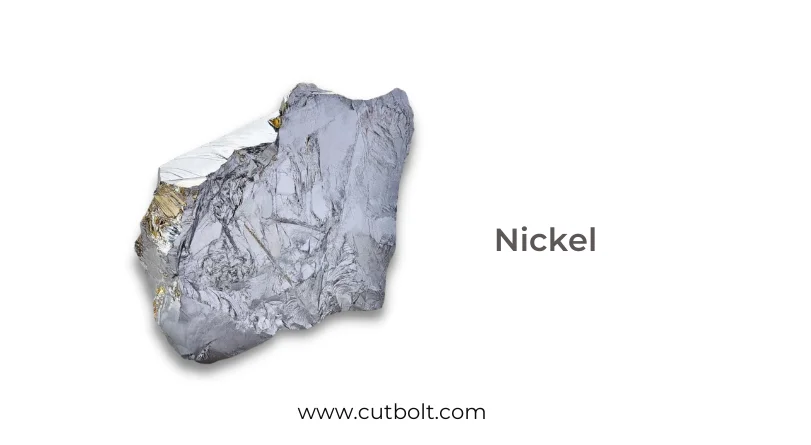
How to choose the right steel for your knife?
You now have a sound knowledge of steel, which will help you make the right choice.
But there’s one question that only you can answer, and that’s how you’re going to use it.
This criterion is decisive in choosing the right steel for the blade of your future knife.
1. Knife blade steel for classic, everyday use
Is your knife essentially going to be used for everyday tasks? Like opening a parcel or slicing a sheet of paper or cardboard.
If yes, there’s no need to opt for a very sturdy steel. We advise you to give priority to corrosion resistance and ease of sharpening. This way, the blade won’t require much maintenance, which is perfect for the average man’s knife.
If the budget is limited, 8Cr13MoV stainless steel may be preferred, while if it’s more substantial, CPM-S30V, M390 Böhler or VG-10 may be chosen.
8Cr13MoV is used extensively by Spyderco at Byrd Knife. N690Co steel, a sort of European version of VG-10, is very popular for its versatility, making it ideal for EDC use.
2. Knife blade steel for survival and bushcraft
If you’re an adventurer, then you’re probably going to buy a survival knife, or bushcraft knife, call it what you wish.
Even if the outdoors is a relatively vast field, this type of knife needs to be sturdy, as the blade is likely to be put under a lot of stress, to accomplish sometimes complex, difficult tasks.
Good strength will prevent the steel from breaking easily and quickly. Ease of sharpening is also important, as outdoor maintenance is more delicate than at home!
For outdoor applications such as survival, we recommend 1095 carbon steel, which offers excellent shock resistance as well as mechanical strength.
We could also mention D2 steel or, even better, its improved version, Sleipner. Of course, it’s important to opt for a fixed knife – not a folding one, if you prefer.
3. Knife blade steel for hunting
The choice of steel for the blade of a hunting knife is never an easy one.
Indeed, the choice between stainless steel and carbon steel depends on you, or rather on your ability to sharpen and your sense of maintenance.
A carbon blade is certainly harder and sharper, but it is also subject to stresses such as corrosion from water or even the blood of butchered, open animals.
This can be an excellent choice, but the blade must be wiped clean after each use, otherwise, stains may appear. If you don’t intend to clean the blade immediately after use, it’s best to err on the side of caution and opt for a stainless steel blade.
However, you should be aware that your hunting knife will be less easy to sharpen than with a carbon blade. Hunting friends, you know everything: it’s up to you to make an informed choice!
4. Knife blade steel for the maritime world
Are you a professional sailor? Or do you have an activity or hobby related to water or the maritime world?
This could be fishing, kayaking or living aboard a boat. For this type of use, an excellent choice is always H1 steel, since it has the advantage of being 100% stainless. So you’ll never have to worry about dropping your knife in the water again!
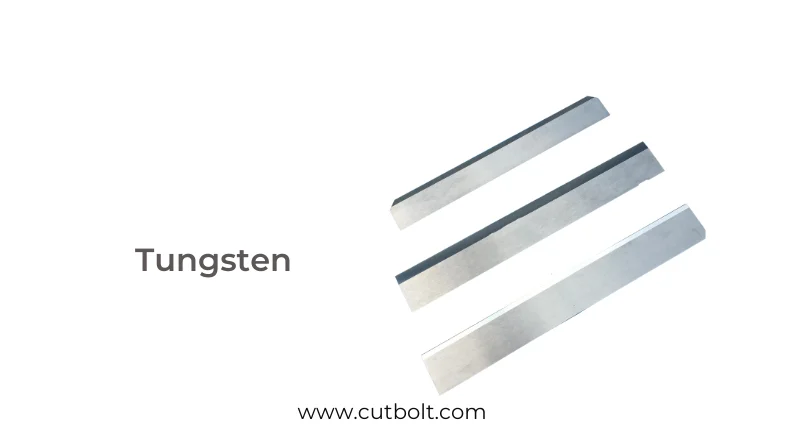
Knife blade steels at every price
As with everything, every steel has its own market price, depending on its quality and properties. Whether stainless or carbon steel, the price can vary enormously.
Generally speaking, the higher the price, the higher the quality, but there are also good value-for-money steels (Sandvik 12C27 or AUS-8).
Investing in a top-of-the-range steel is therefore very worthwhile, especially for demanding and experienced users who use their tools intensively.
Here are a few examples of high-end steels manufactured by 3 different companies: M390 by Böhler, CTS-204P by Carpenter and CPM-20CV by Crucible Particle Metallurgy. Perfect for those who want the best for their knives!
Summary: What is the best steel for a knife blade?
The choice of steel is a decision that can truly make or break your cutting experience. As we conclude this comprehensive guide on finding the best steel for a knife, one thing becomes abundantly clear: there is no one-size-fits-all answer. The “best” steel is a deeply personal choice, influenced by your specific needs, preferences, and budget.
Remember, the perfect steel for a kitchen knife might not be the same as what you’d want in a hunting or survival knife. The key lies in understanding the attributes of different steels and how they align with your intended use. It’s a journey of balancing factors like hardness, toughness, edge retention, and corrosion resistance.
Ultimately, the best steel for your knife is the one that empowers you to achieve precision, efficiency, and satisfaction in your cutting tasks. So, explore, experiment, and, most importantly, enjoy the art of knife craftsmanship. With the right steel in hand, your knife can be a lifelong companion, ready to meet your culinary or outdoor adventures head-on. Happy slicing!


